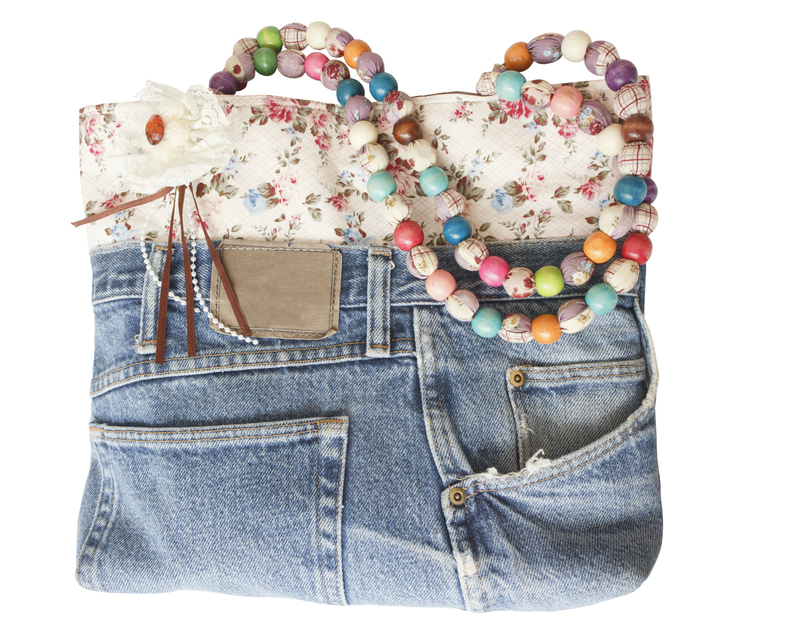Cutting Down on Waste through Smarter Packaging and Cardboard Disposal
In an era increasingly defined by environmental responsibility, finding sustainable solutions for packaging and disposing of cardboard waste has become both a priority and a necessity. As consumers and businesses strive to reduce their eco-footprints, cutting down on waste through smarter packaging choices and efficient cardboard disposal practices is crucial. This comprehensive guide delves into innovative packaging options, best disposal methods, statistics, and actionable tips for minimizing your impact while contributing to a healthier planet.

Why Reducing Packaging Waste Matters
Packaging waste, particularly cardboard and paper products, constitutes a significant portion of global landfill content. Smarter packaging and responsible cardboard disposal can directly impact landfill reduction, energy use, and natural resource conservation. According to the Environmental Protection Agency (EPA), containers and packaging account for nearly 30% of total municipal solid waste in the United States alone.
- Cardboard recycling saves about 24% of the energy required to make new cardboard from raw materials.
- Landfills generate methane--a potent greenhouse gas--when organic packaging materials decompose anaerobically.
- Packaging waste contributes to marine pollution and can harm wildlife both on land and in water.
Understanding the Lifecycle of Cardboard Packaging
The Journey of Cardboard from Production to Disposal
Cardboard, particularly corrugated fiberboard, is ubiquitous in modern packaging due to its strength, versatility, and cost-effectiveness. However, its short use cycle--often lasting only until delivery or unpacking--means vast quantities are discarded daily.
- Production requires significant amounts of water, wood, and energy.
- Most cardboard is used once before being disposed of, though it is highly recyclable.
- Only about 67% of cardboard is recycled globally, with the rest ending up in landfills or incinerators.
Understanding this lifecycle helps highlight the urgent need for both smarter packaging options and responsible cardboard disposal practices.
What Is Smarter Packaging?
The Shift to Eco-Friendly Packaging Solutions
Smart packaging isn't just about using less material; it's about designing, sourcing, and using packaging that minimizes waste, is easily reusable or recyclable, and has a reduced environmental impact. Businesses and consumers alike play vital roles in driving this transformation.
Key Elements of Smarter Packaging
- Reduced material usage: Minimize the amount of cardboard and other packaging used by customizing sizes and eliminating unnecessary inserts.
- Sustainable materials: Use recycled, biodegradable, or compostable alternatives to traditional packaging.
- Design for recyclability: Choose packaging that is easy to disassemble, sort, and recycle.
- Reusable options: Shift to packaging that can be repurposed in the supply chain or by consumers.
Many leading companies, including Amazon, IKEA, and Unilever, are investing in eco-friendly packaging solutions to meet customer demands and regulatory requirements.
The Environmental Impact of Cardboard Waste
Key Statistics
- The world produces approximately 400 million tons of cardboard each year.
- Cardboard and paper waste make up the largest percentage of municipal solid waste by material type.
- One ton of recycled cardboard saves nine cubic yards of landfill space and conserves 46 gallons of oil.
Improving packaging and cardboard disposal can therefore result in substantial resource savings and pollution reduction. The environmental impact isn't just limited to landfill use--cardboard production is also a major source of carbon dioxide emissions and deforestation.
Best Practices for Cardboard Disposal
How to Properly Dispose of Cardboard
Proper cardboard disposal involves more than just tossing boxes in the recycling bin. To maximize the benefits, follow these best practices:
- Break down boxes: Flatten cardboard to save space and ensure easier processing at recycling facilities.
- Keep it clean: Remove packaging tape, labels, and any contaminated material (grease, food residue).
- Separate wet and dry cardboard: Wet or greasy cardboard (like pizza boxes) can contaminate recycling; compost this instead, if possible.
- Check local restrictions: Some recycling centers have specific guidelines about the types and quantity of cardboard they accept.
Alternatives to Recycling
- Reuse boxes for storage, mailing, crafting, or moving.
- Donate good-quality boxes to local businesses, schools, or charities.
- Create compostable mulch or garden beds using shredded cardboard.
Why Not All Cardboard is Recycled
Despite recycling being one of the most effective ways to cut down on packaging waste, not all cardboard ends up in the proper stream. The reasons include:
- Consumer confusion about recycling rules
- Lack of access to convenient recycling points
- Contamination from food or chemicals
- Incorrect disposal due to inconvenience or misinformation
Education and accessible infrastructure are key to improving recycling rates and keeping high-quality material in circulation.
Innovations and Trends in Smarter Packaging
Emerging Packaging Solutions
- Minimalist packaging: Designed to use the least amount of material possible while keeping products safe.
- Plant-based alternatives: Biodegradable options such as mushroom packaging or cornstarch-based plastics are gaining traction.
- Edible packaging: A novel approach for food products, using materials that can be safely consumed.
- Returnable packaging: Systems that allow packaging to be sent back, cleaned, and reused multiple times.
These innovations reduce cardboard waste up front and offer new ways for businesses to maintain functionality while also meeting sustainability goals.
Smart Packaging Technologies
- RFID tags and QR codes: Allow for better tracking and sorting of packaging for reuse and recycling.
- Modular design: Packaging components are designed to fit together in various ways, reducing the need for custom boxes.
- On-demand box creation: Machines in warehouses now create perfectly sized boxes for each shipment, eliminating excess cardboard use.
Role of Consumers and Businesses
How Consumers Can Support Eco-Friendly Packaging and Disposal
- Choose brands that prioritize sustainable packaging.
- Opt for products with minimal or recyclable packaging.
- Learn and follow local recycling guidelines for both cardboard and other materials.
- Encourage retailers to adopt smarter packaging practices.
Business Initiatives for Reducing Cardboard and Packaging Waste
- Redesign packaging for efficiency, using fewer materials and more recycled content.
- Establish in-house recycling and reuse programs.
- Educate employees and customers about the importance of smart packaging and cardboard disposal practices.
- Pilot innovative solutions such as reusable shipping crates or biodegradable packaging materials.
Cardboard Recycling: Step-by-Step Guide
1. Preparation
Remove all non-cardboard contents, such as plastic windows, tape, or packing peanuts.
2. Flatten
Save space by flattening boxes completely.
3. Cleanliness
Ensure cardboard is free from food, grease, or excessive moisture.
4. Sorting
Place eligible cardboard in the designated recycling bin or drop-off location.
5. Repeat
Continue recycling all cardboard regularly and encourage others to do the same.
Tips for Cutting Down on Packaging and Cardboard Waste
- Buy in bulk: Reduces the overall amount of packaging per item.
- Support refillable product systems, especially for household goods.
- Avoid products with excessive packaging or non-recyclable materials.
- Repurpose sturdy boxes for home organization or crafting.
- Educate friends and family about the importance of smarter packaging and responsible disposal.
Frequently Asked Questions
What types of cardboard can be recycled?
Most clean and dry cardboard, including corrugated boxes, cereal boxes, and shoe boxes, is recyclable. Avoid recycling wax-coated or heavily contaminated cardboard.
Can I compost cardboard?
Yes, as long as it's not coated in plastic or heavily printed with inks. Shredded cardboard works well as a brown material in compost piles.
What can businesses do to reduce cardboard waste?
Businesses can design packaging that uses less material, increase the recycled content in boxes, implement reuse programs, and educate customers about proper disposal.
Are there alternatives to using cardboard for shipping?
Yes, alternatives include reusable plastic crates, mushroom-based packaging, cornstarch packaging, or even fabric pouches for smaller shipments.
Case Studies: Companies Leading the Way
Amazon's Frustration-Free Packaging
Amazon launched its Frustration-Free Packaging initiative to reduce packaging waste, requiring suppliers to use recyclable boxes and minimal filler. The result has been millions of pounds of packaging saved annually.
IKEA's Move Towards Mushroom Packaging
IKEA now uses mushroom-based material for some furniture packaging, which is biodegradable and decomposes in weeks.
Loop and Reusable Packaging Sets
The Loop system, adopted by brands like Nestle and Unilever, allows customers to receive products in reusable containers, which are returned, cleaned, and refilled, drastically reducing packaging waste.

The Future of Packaging and Waste Reduction
The future is bright for smarter packaging and cardboard disposal. Increasing regulatory pressure, consumer demand for sustainability, and technological advancements are driving industry-wide change.
- Biodegradable packaging materials will become more common.
- Artificial intelligence and automation will further streamline supply chains and reduce waste.
- Governments will likely introduce stricter requirements for packaging waste reduction and recycling.
Conclusion: Your Role in Reducing Packaging Waste
Cutting down on waste through smarter packaging and efficient cardboard disposal is not only a corporate responsibility--it's a personal commitment we owe to our planet. By making thoughtful choices, adopting innovative waste-reduction practices, and encouraging others to do the same, we can each help move our society toward sustainability.
- Choose eco-friendly packaging whenever possible.
- Dispose of cardboard properly by following recycling and composting guidelines.
- Advocate for systemic changes within your community and industry.
Remember, every box you break down and recycle, every sustainable package you choose, and every bit of knowledge you share contributes to a world with less waste and a brighter future.